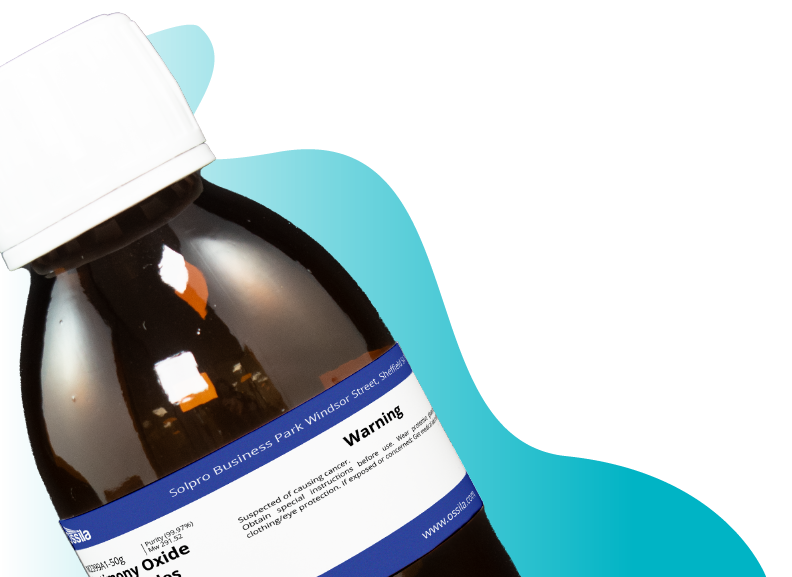Tungsten Disulfide (WS2) Few-Layer Film
CAS Number 12138-09-9
2D Materials, Low Dimensional Materials, Materials, Transition Metal Chalcogenides (TMCs), Transition Metal Dichalcogenides (TMDs), Tungsten Disulfide (WS2)Tungsten disulfide few-layer film, an outstanding full solar spectrum photocatalyst
For applications in electrodes, energy storage devices and photoelectrochemical cells
Technical Data | Applications | MSDS | Related Products | Resources and Support
Few-layer tungsten disulfide (WS2, CAS number 12138-09-9) film has a 2D-layered structure with a narrow indirect bandgap of of 1.35 eV. In contrast, the monolayer film possesses a direct bandgap of 2.1 eV.
WS2 few-layer films possess very high NIR light photocatalytic activity. They also have strong UV and visible light photocatalytic activity, making them a valuable and outstanding full solar spectrum photocatalyst.
High Purity
>99% Tungsten Disulfide Purity
Worldwide shipping
Quick and reliable shipping
Low Cost
Low Cost Tungsten Disulfide
Visible light photocatalytic activity
Strong UV and visible light photocatalytic activity
Technical Data
| CAS Number | 12138-09-9 |
| Chemical Formula | WS2 |
| Molecular Weight | 247.97 g/mol |
| Bandgap | 1.4 - 2.01 eV |
| Synonyms | Tungsten sulfide, Tungsten sulfide, Tungsten(IV) sulfide |
| Classification / Family | Transition metal dichalcogenides (TMDCs), 2D semiconductor materials, Nano-electronics, Nano-photonics, Materials science |
Product Details
| Substrate | Sapphire |
| Product Code | M2172F11 |
| Size | 1 cm × 1 cm* |
| Growth Method | CVD synthesis |
| Appearance | Transparent |
| Purity | >99% |
| Transparency | >97% |
| Coverage | >95% |
| Number of Layers | 2 - 5 |
| Sheet Resistance | N/A |
| Transfer Method | Directly grown |
| Substrate Thickness | 300 µm |
*Other sizes available: up to 2 cm × 2 cm or 2 inches in diameter.
High-quality tungsten disulfide (WS2) few-layer films are available on Sapphire as standard. Different substrates of few-layer WS2 films, including SiO2/Si, Glass, Silicon and Quartz are also available via custom order.
Please contact us for more information regarding custom products.
Pricing Table
| Product Code | Substrate | Size | Quantity (EA) | Price |
|---|---|---|---|---|
| M2172F11 | Sapphire | 1 cm × 1 cm | 1 | £420 |
Applications
Due to its distinctive electron configuration and high specific surface area, few-layer tungsten disulfide nanosheets have potential applications in electrodes and energy storage devices, supercapacitors, and photoelectrochemical cells as a catalyst for hydrogen evolution reactions (HERs). With tunable electromagnetic absorption, it has practical applications against electromagnetic pollution. WS2 is also a great potential candidate in photothermal therapy for the ablation of cancer cells, when NIR light is absorbed and converted into heat.
Synthesis
High-quality tungsten disulfide few-layer films were grown directly on the substrates (sapphire) via the chemical vapor deposition (CVD) method.
Usage
WS2 few-layer films can be used for research purposes such as microscopic analysis, photoluminescence, and Raman spectroscopy studies. Few-layer WS2 films can also be transferred to other substrates.
MSDS Document
Tungsten disulfide few-layer film
Related Products
We stock a wide range of 2D materials available to purchase online. Please contact us if you cannot find what you are looking for.



